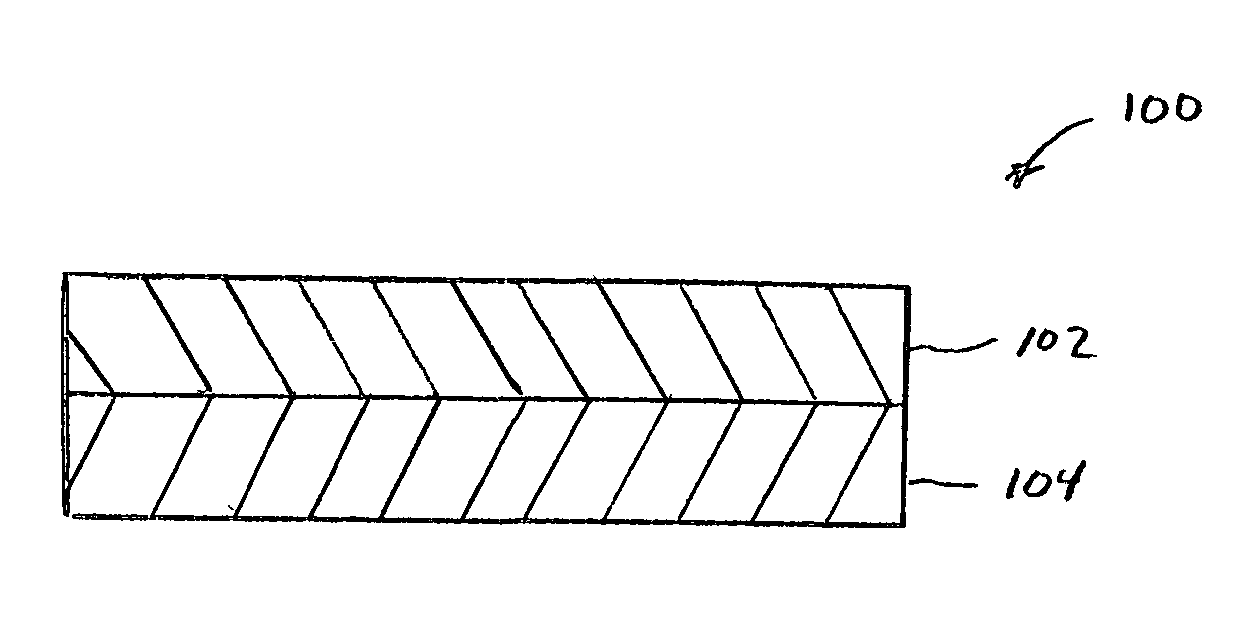Bimodal pore size nonwoven web and wiper
a nonwoven web and pore size technology, applied in the field of nonwoven web laminates, can solve the problems of ineffective nonwoven webs, ineffective nonwoven web laminates, ineffective trapping and removing particles of different sizes or viscous liquids, etc., to achieve effective cleaning of the surface to be cleaned, facilitate cleaning, and facilitate fluid release
- Summary
- Abstract
- Description
- Claims
- Application Information
AI Technical Summary
Benefits of technology
Problems solved by technology
Method used
Image
Examples
examples
[0060] Several different laminates were prepared within the scope of the present invention. The layer having a mean equivalent pore radius of less than 100 μm in each of the following examples is a 20 gsm coform nonwoven web having about 65% by weight pulp fibers and about 35% by weight polymer fibers. This layer can be prepared in accordance with U.S. Pat. No. 4,100,324 to Anderson. To this layer, the following layer having a mean equivalent diameter greater than 100 μm.
[0061] 1. A meltblown nonwoven web having a fiber diameter in the range on 20-60 μm, prepared from polypropylene and having a basis weight of about 34 gsm.
[0062] 2. A bicomponent spunbond nonwoven web with a basis weight of about 20 gsm having filaments with an average denier of 5.0 dpf which are from a polyethylene component and a polypropylene component in a side-by-side configuration. This nonwoven web can be prepared in accordance with U.S. Pat. No. 5,382,400 to Pike and is point bonded with a H&P bond pattern...
PUM
| Property | Measurement | Unit |
|---|---|---|
| pore size distribution | aaaaa | aaaaa |
| mean equivalent pore radius | aaaaa | aaaaa |
| equivalent pore radius | aaaaa | aaaaa |
Abstract
Description
Claims
Application Information
 Login to View More
Login to View More - R&D
- Intellectual Property
- Life Sciences
- Materials
- Tech Scout
- Unparalleled Data Quality
- Higher Quality Content
- 60% Fewer Hallucinations
Browse by: Latest US Patents, China's latest patents, Technical Efficacy Thesaurus, Application Domain, Technology Topic, Popular Technical Reports.
© 2025 PatSnap. All rights reserved.Legal|Privacy policy|Modern Slavery Act Transparency Statement|Sitemap|About US| Contact US: help@patsnap.com



